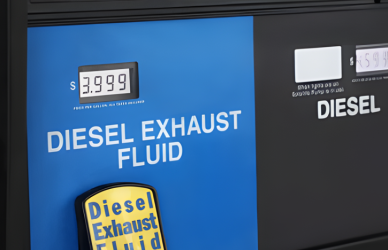Progress on East Interchange Improvements
In a strategic move to enhance traffic flow along key truck routes, the Georgia Department of Transportation (GDOT) is implementing a major traffic shift on Tuesday, August 27, on westbound Interstate 20. This initiative is part of the extensive I-285/I-20 East Interchange project, which focuses on facilitating continuous bridge enhancement and widening of the corridor. Motorists traveling from Panola Road, a critical truck route, will be directed 50 feet to the right onto newly constructed bridge sections at Snapfinger Creek, seamlessly transitioning back to existing lanes near Wesley Chapel Road. This shift includes significant re-striping, the addition of raised pavement markers, and the installation of temporary barriers to ensure safety.
To manage all three travel lanes effectively on I-20, the bridge expansion and replacement will occur in phases. The initial phase involves constructing a new bridge adjacent to the current westbound bridge. Concurrently, crews are working diligently on the new flyover bridges within the interchange, with concrete pouring progressing for support structures. Key milestones achieved recently include the installation of steel girders for the new I-285 southbound to I-20 eastbound bridge ramp and the commencement of concrete pouring for the bridges at Fairington Road and Hillandale Drive. With rock blasting now completed, efforts are focused on developing a new westbound auxiliary lane on I-20, alongside an eastbound collector-distributor lane, plus ongoing paving and barrier wall installations throughout the area. These upgrades will significantly improve the efficiency and safety of this vital truck route.
Enhancements to Freight Mobility at Spaghetti Junction
GDOT’s efforts are also directed towards revamping one of the nation’s most heavily-trafficked freight corridors: the Interstate 20/I-285 interchange, widely known as Spaghetti Junction. This critical juncture frequently appears on the American Transportation Research Institute’s (ATRI) annual Top Truck Bottleneck List, often ranking among the top five most congested sites for truck transportation nationwide.
Matthew Fowler, Project Manager for GDOT, emphasized the importance of this transformation: “We’re excited to start the next phase of this project, which will improve safety for motorists and freight along this interchange ranked the fifth-worst truck bottleneck in the country by the American Transportation Research Institute.” This project is a vital part of Georgia’s Freight Plan, aiming to alleviate traffic congestion while enhancing safety for all road users on this essential truck route.
Overview of the I-285/I-20 West Interchange Project
The extensive I-285/I-20 West Interchange project will cover a significant area, encompassing six miles of I-20 from the Factory Shoals Road overpass to Hamilton E. Holmes Drive, and two miles of I-285 from just south of the Donald Lee Hollowell Parkway interchange to the MLK, Jr. Drive interchange. With a projected value of $1.2 billion, the initiative includes comprehensive reconstruction and expansion of crucial ramps, along with the integration of both collector-distributor and auxiliary lanes on I-20 west and I-285 north of the interchange. These enhancements will significantly improve traffic flow on critical truck routes within the state.
Upcoming improvements will eliminate left-hand ramp entries and exits, optimize geometric configurations, and adjust elevation grades to enhance flow. Noteworthy changes will feature two-lane ramps and new westbound collector-distributor lanes linking the I-285/I-20 West Interchange to Fulton Industrial Boulevard, an area frequently used by trucks. Additionally, modifications and replacements will include bridge structures and ramps that cross significant routes, such as Fulton County Railway (CSX RR) and the Chattahoochee River.
With construction slated to begin next year, GDOT anticipates that substantial components of the project will be completed by 2030. These enhancements represent a significant investment in Georgia’s transportation infrastructure, aiming to improve the overall driving experience while addressing freight mobility challenges along key truck routes.
Source: Commercial Carrier Journal











